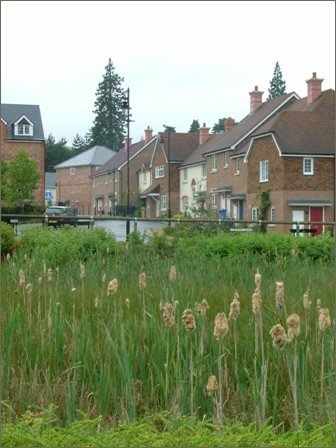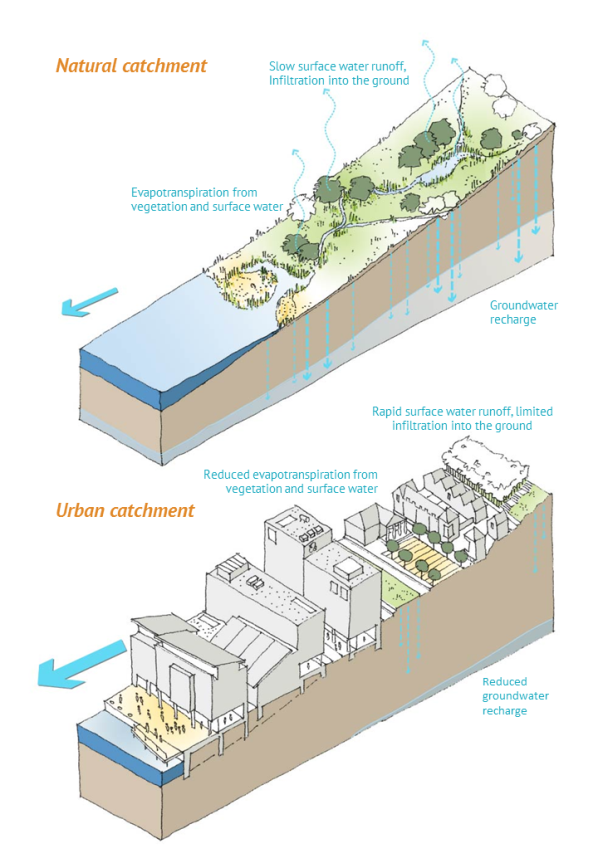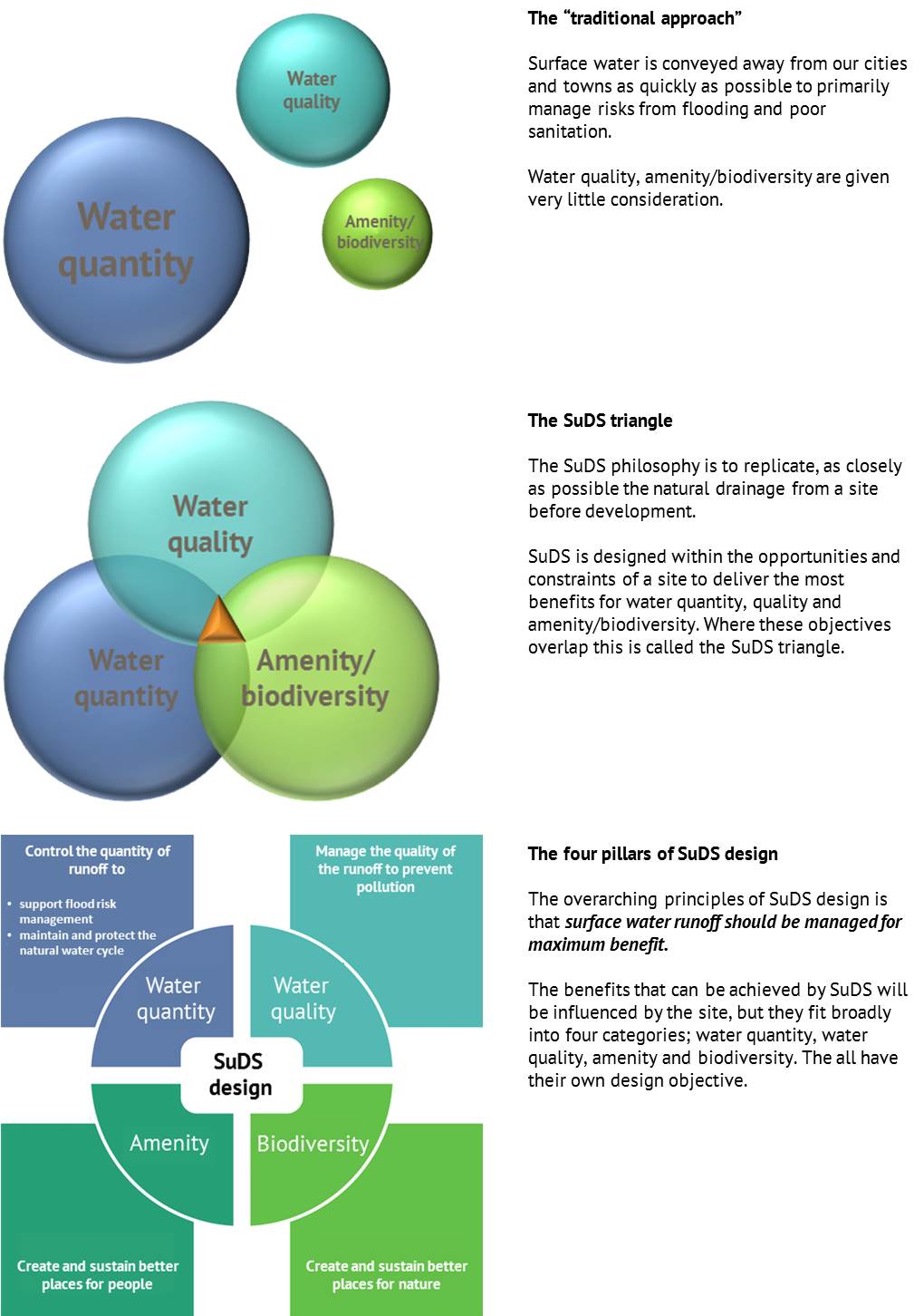- Delivering SuDS
- Using SuDS
- Background
- SuDS principles
- Benefits of SuDS
- Benefits of SuDS
- Why developers should choose SuDS
- Flood risk management
- Water quality management
- Biodiversity & ecology
- Amenity
- Air quality
- Building temperature
- Carbon reduction and sequestration
- Crime
- Economic growth
- Enabling development
- Flexible infrastructure/climate change adaptation
- Groundwater recharge
- Education
- Health and well being
- Pumping wastewater
- Rainwater harvesting
- Recreation
- Tourism
- Traffic calming
- Treating wastewater
- SuDS components
- SuDS components overview
- Source control
- Swales & conveyance channels
- Filtration
- Infiltration
- Retention & detention
- Wetlands
- Inlets, outlets and control structures
- SuDS performance & monitoring
- Delivery
- The costs & benefits of SuDS
- Adoption & maintenance of SuDS
- Legislation & regulation
- Design guidance
- Retrofitting SuDS
- Drainage exceedance
Sustainable drainage
Drainage systems can contribute to sustainable development and improve the places and spaces where we live, work and play by balancing the different opportunities and challenges that influence urban design and the development of communities.
Approaches to manage surface water that take account of water quantity (flooding), water quality (pollution) biodiversity (wildlife and plants) and amenity are collectively referred to as Sustainable Drainage Systems (SuDS).
SuDS mimic nature and typically manage rainfall close to where it falls. SuDS can be designed to transport (convey) surface water, slow runoff down (attenuate) before it enters watercourses, they provide areas to store water in natural contours and can be used to allow water to soak (infiltrate) into the ground or evaporated from surface water and lost or transpired from vegetation (known as evapotranspiration).
SUDS are drainage systems that are considered to be environmentally beneficial, causing minimal or no long-term detrimental damage. They are often regarded as a sequence of management practices, control structures and strategies designed to efficiently and sustainably drain surface water, while minimising pollution and managing the impact on water quality of local water bodies.

SuDS are more sustainable than traditional drainage methods because they:
- Manage runoff volumes and flow rates from hard surfaces, reducing the impact of urbanisation on flooding
- Provide opportunitiesd for using runoff where it falls
- Protect or enhance water quality (reducing pollution from runoff)
- Protect natural flow regimes in watercourses
- Are sympathetic to the environment and the needs of the local community
- Provide an attractive habitat for wildlife in urban watercourses
- Provide opportunities for evapotranspiration from vegetation and surface water
- Encourage natural groundwater/aquifer recharge (where appropriate)
- Create better places to live, work and play.
Figure 1 demonstrates the impacts of urbanisation on a catchment by reducing its permeability and increasing surface water runoff. This reduces opportunities for water to be managed naturally with the potential for pollution and localised flooding when the piped systems cannot cope with rainfall.

SuDS may also allow new development in areas where existing sewerage systems are close to full capacity, thereby enabling development within existing urban areas.
Sustainable drainage is moving away from the traditional thinking of designing only to manage flood risk, where runoff is regarded as a nuissance to a philiosophy of where surface water is a valuable resource and should be managed for maximum benefit.

Sustainable drainage is a concept that includes long term environmental and social factors in decisions about drainage. It takes account of the quantity and quality of runoff, and the amenity and aesthetic value of surface water in the urban environment. Many existing urban drainage systems can cause problems of flooding, pollution or damage to the environment and are not proving to be sustainable in the context of wider challenges from climate change and urbanisation.
Read more on:



